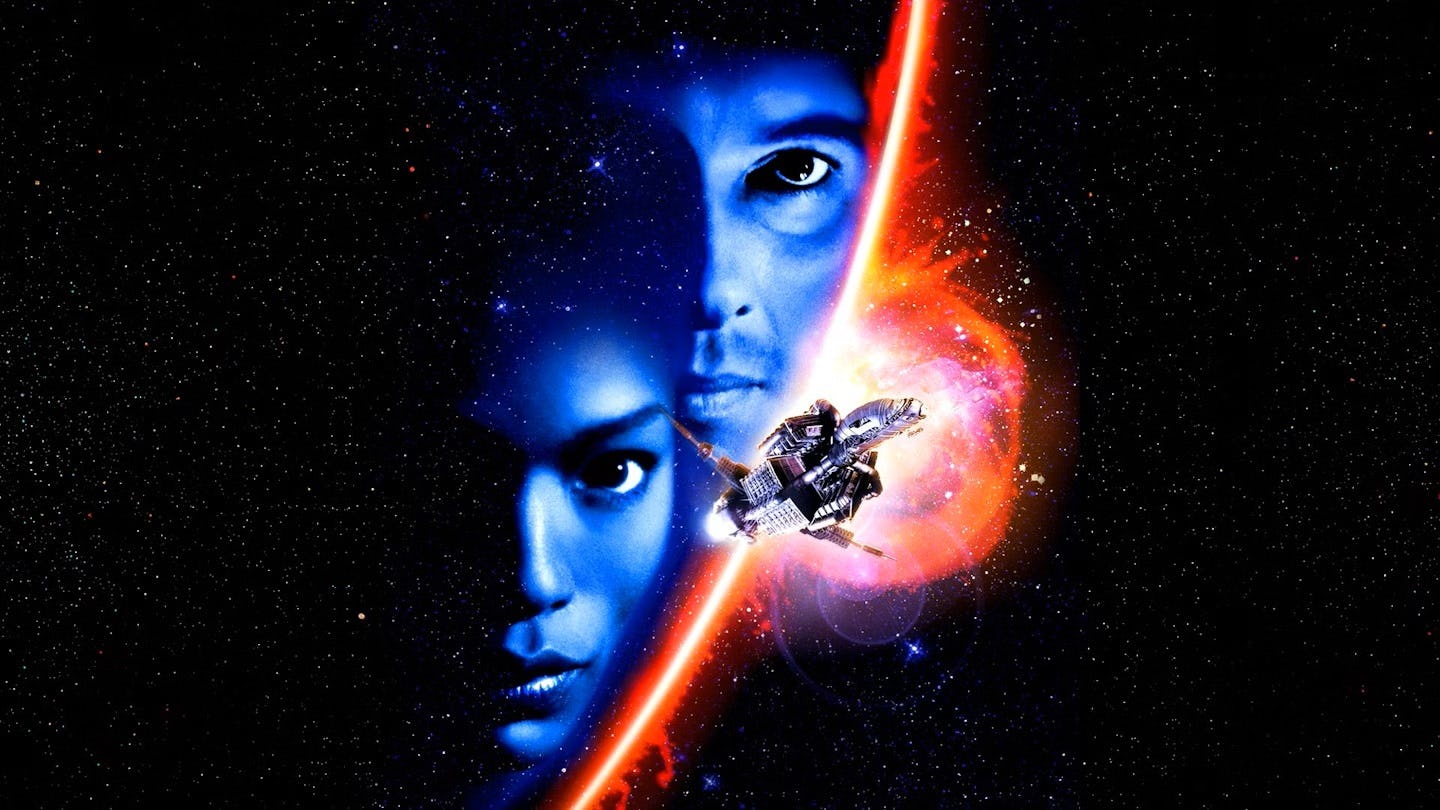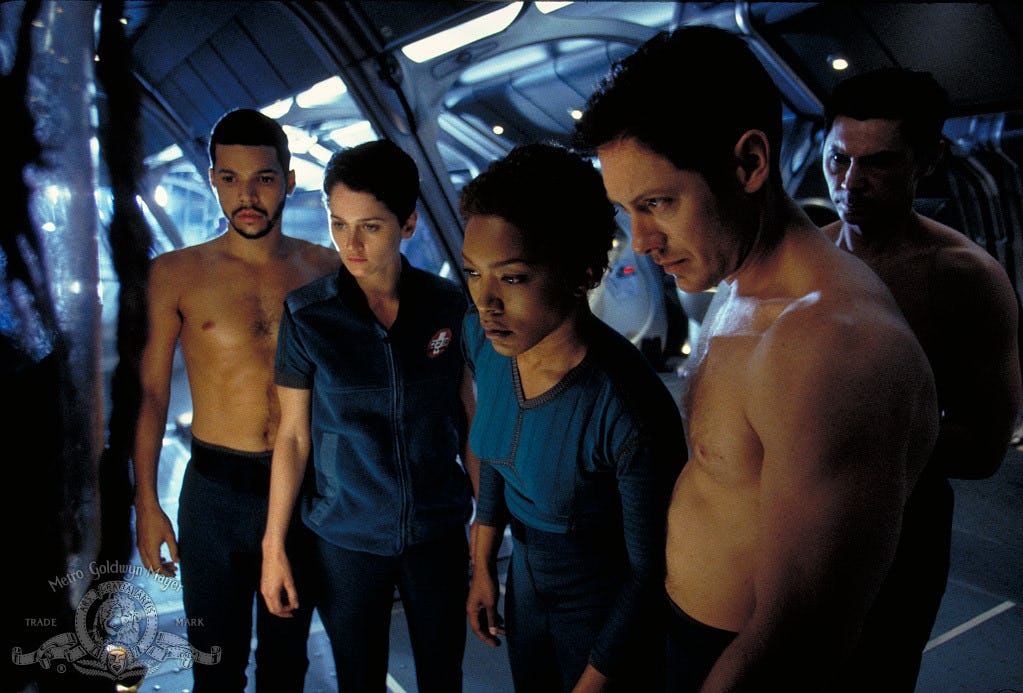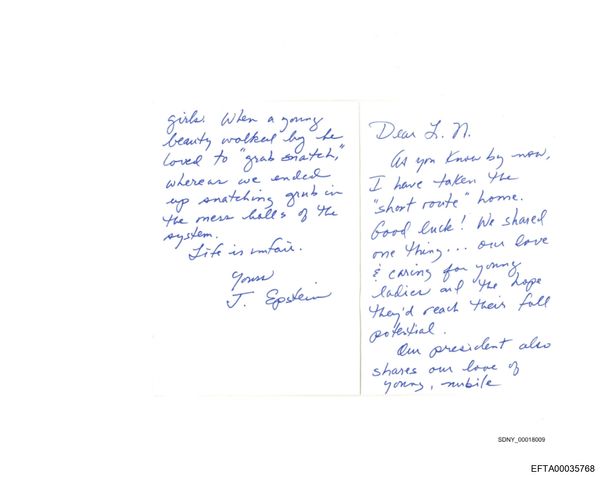
If any of the three people who directed Supernova had made a science-fiction film with little studio interference, you'd likely have a good movie. In fact, if you divided Supernova’s approximate budget of $90 million into three and gave portions to Walter Hill, Jack Sholder, and Francis Ford Coppola, you could end up with three compelling, creative mid-budget genre films that, at the very least, would have bombed far less publicly.
The version of Supernova released 25 years ago bore none of the fingerprints of the artists who made it (nor any credits, as the Directors Guild of America allowed Walter Hill, who was responsible for the lion’s share of directing duties, to be credited under a pseudonym). Set on a medical spacecraft that can quantum jump between dimensions to recover their targets, Supernova tries to make up for its lack of narrative ingenuity – a small ship rescues a mysterious, charismatic man (Peter Facinelli) with sinister intentions and uber-powered space matter – with tired hallmarks of ‘90s sci-fi.
The sets are lit moodily, the effects are colorful and plasma-heavy, and there are more lit-up displays than you know what to do with. James Spader and Angela Bassett, two of the best actors of their generation, are denied the chance to perform as urgently and instinctively as Sigourney Weaver in Alien, instead forced to make the same concerned faces as the slasher-tinted carnage unfolds.
Supernova doesn’t drag, but only because it’s been edited down to the shortest possible length and quickest possible pace by studio decree; it cuts poorly, and there’s a lot of off-screen (read: slapped in later) lines that scream of being built in post-production and reshoots. This is peak studio slop; at 90 minutes, Supernova is both bloated and truncated, a tension-free and flavorless whistle-stop tour of all the ways space movies never flourished in the 1990s.
Many genres blossomed in the commercial and independent boom of American ‘90s cinema, but despite the number of exemplary and profitable sci-fi hits, films set in space suffered. It was a decade of reckoning with modernity — explosive blockbusters freely imagined country-leveling destruction before the images of 9/11 were burned into America’s psyche. Sci-fi fixated on future dystopias, alternate realities, and artificial intelligence rather than intrepid voyages beyond the stars. Independence Day, T2: Judgment Day, The Matrix, 12 Monkeys, Contact, and Men in Black all thrived, while Alien 3, Event Horizon, Lost in Space, Starship Troopers, Soldier, and poor old Space Truckers froze in the vacuum.

The failure of ‘90s space movies wasn’t solely sociological; like many box office flops, few looked appealing. With the exception of cult films like Starship Troopers, which leaned into cliche to expose the brain rot of fascist society, most space films were difficult to distinguish from one another, either malformed clones of Ridley Scott’s Alien or expensive productions that failed to clear the bar set by multiple Star Trek shows over the decades. It wasn't that space exploration had become irrelevant — Voyager 2 had spent the past decade beaming us incredible images of the Solar System, and in 1997, the first Mars rover began surveying the red planet — but the movies just weren’t very good.
Supernova may not be exciting, but it is revealing, as it demonstrates all the in-built obstacles a space movie needs to overcome to stand out from genre innovators. If we spend the whole film on a spaceship, then our locations are limited to those a ship would have; if we’re floating through space, then our characters can only be a crew and their unexpected guests; if their survival is the biggest concern, then the drama will involve breached airlocks, irradiated compartments, and deep space explosions. All of these expected and necessary story beats make it difficult to convince an audience that your space film is truly unique, especially because the infancy of CG-heavy projects ensured that every rendering of space action looked pretty similar.
Supernova wasn’t the last of its kind — a trifecta of Mars action films followed swiftly in its wake, and Red Planet, Mission to Mars, and Ghost of Mars hammered home the fact that the genre needed a Solaris, Sunshine, or Moon-style shake-up (artistically speaking, at least; none of those titles made much money either). But none of the studio disappointments that followed Supernova dealt with this much creative interference, or ballooned into such a cosmic catastrophe that only made back $14 million worldwide. Twenty years after Alien, the film demonstrated all the ways the unique sensibilities of Ridley Scott’s horror had been regurgitated and sanitized, revealing a simple structure and narrative design that was only compelling if it was ingeniously and meticulously expanded.
For space films to thrive, they had to look inward as much as they do outward, mapping how our desires and possessiveness are mirrored in humanity's conflicting goals of capitalist expansion and romantic discovery. That is to say, there’s a movie where a zero-gravity love scene is beautiful, but it is not Supernova.







